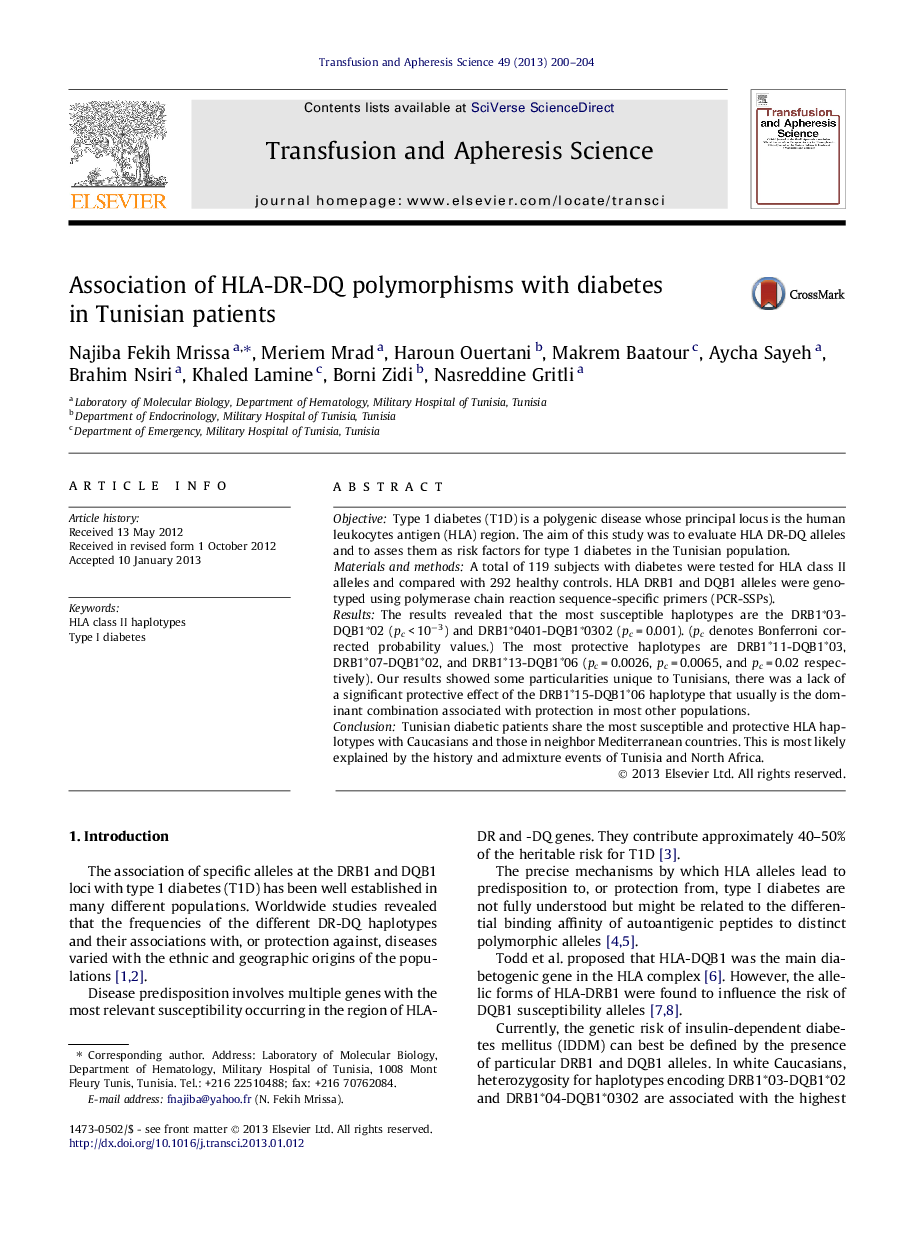| Article ID | Journal | Published Year | Pages | File Type |
|---|---|---|---|---|
| 3335136 | Transfusion and Apheresis Science | 2013 | 5 Pages |
ObjectiveType 1 diabetes (T1D) is a polygenic disease whose principal locus is the human leukocytes antigen (HLA) region. The aim of this study was to evaluate HLA DR-DQ alleles and to asses them as risk factors for type 1 diabetes in the Tunisian population.Materials and methodsA total of 119 subjects with diabetes were tested for HLA class II alleles and compared with 292 healthy controls. HLA DRB1 and DQB1 alleles were genotyped using polymerase chain reaction sequence-specific primers (PCR-SSPs).ResultsThe results revealed that the most susceptible haplotypes are the DRB1∗03-DQB1∗02 (pc < 10−3) and DRB1∗0401-DQB1∗0302 (pc = 0.001). (pc denotes Bonferroni corrected probability values.) The most protective haplotypes are DRB1∗11-DQB1∗03, DRB1∗07-DQB1∗02, and DRB1∗13-DQB1∗06 (pc = 0.0026, pc = 0.0065, and pc = 0.02 respectively). Our results showed some particularities unique to Tunisians, there was a lack of a significant protective effect of the DRB1∗15-DQB1∗06 haplotype that usually is the dominant combination associated with protection in most other populations.ConclusionTunisian diabetic patients share the most susceptible and protective HLA haplotypes with Caucasians and those in neighbor Mediterranean countries. This is most likely explained by the history and admixture events of Tunisia and North Africa.
